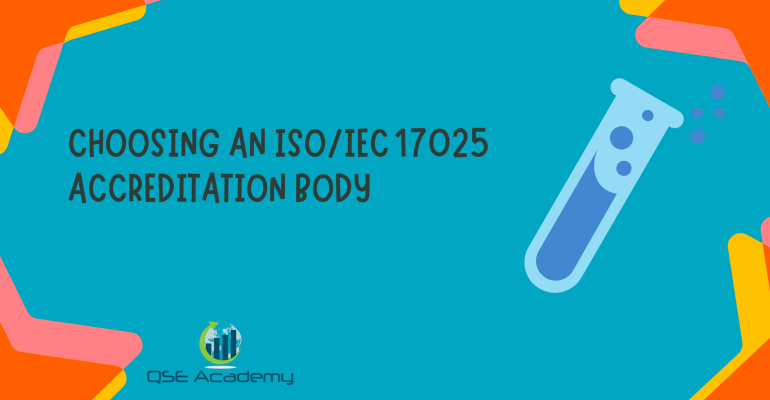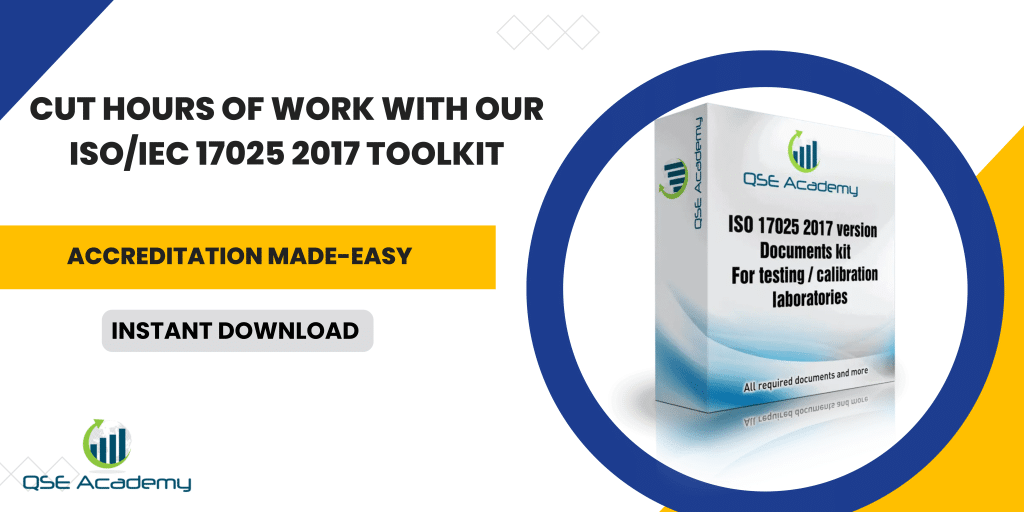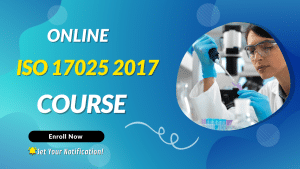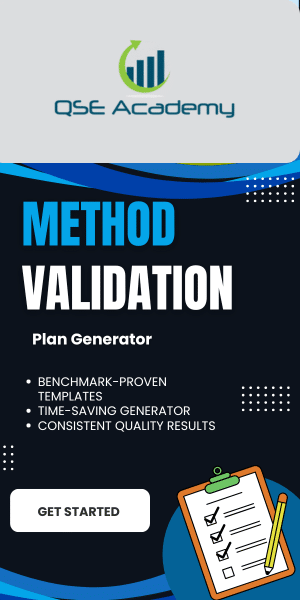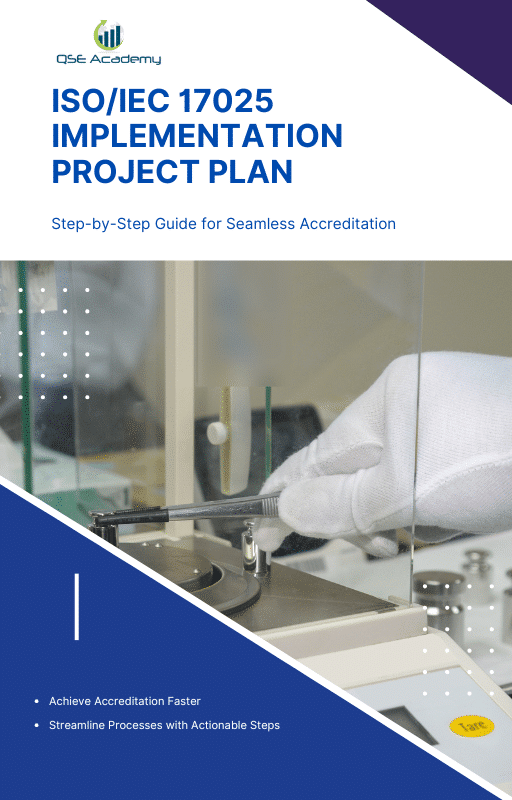Choosing an ISO/IEC 17025 Accreditation Body
Last Updated on October 13, 2025 by Melissa Lazaro
Why Your Choice of Accreditation Body Matters
When labs start their ISO/IEC 17025 journey, most focus on documentation, calibration records, and training. What often gets overlooked? Choosing the right accreditation body.
And that’s a big mistake.
Because your accreditation body isn’t just a name on your certificate—it’s the organization that determines how credible your results look to clients, regulators, and international partners.
Here’s what I’ve noticed: some labs pick whichever body answers first or charges less. Six months later, they realize that certificate doesn’t hold much weight outside their region—or worse, it isn’t accepted by their key customers.
The truth is, not all accreditation bodies are the same. Each has its own scope, fee structure, assessor expertise, and level of global recognition. The right one can elevate your reputation. The wrong one can hold you back.
In this guide, we’ll unpack how accreditation bodies work, what really separates them, and how to choose the one that fits your lab’s scope, market, and long-term goals.
By the end, you’ll know exactly what to look for—and what red flags to avoid—before you send that application.
Understanding What an Accreditation Body Actually Does
Before you choose an accreditation body, it helps to know what they actually do — and what they don’t.
A lot of labs get confused here. Some think an accreditation body is just another certification company handing out certificates for a fee. But ISO/IEC 17025 accreditation works very differently.
Here’s the key distinction:
-
Certification confirms that your management system follows a standard (like ISO 9001).
-
Accreditation proves your technical competence — that your lab can produce valid, traceable results recognized internationally.
In short: certification checks the system; accreditation validates the science.
The Role of an Accreditation Body
An accreditation body’s job is to:
-
Evaluate your lab’s competence, impartiality, and consistency.
-
Assign qualified technical assessors to review your specific testing or calibration methods.
-
Verify that your measurements are traceable to recognized national or international standards.
-
Confirm that your management system aligns with ISO/IEC 17025 requirements.
-
Issue your official accreditation certificate and list your lab in its public directory.
This isn’t a one-time transaction—it’s an ongoing partnership.
Your chosen body will perform surveillance visits every 12–18 months to ensure you’re maintaining compliance.
How ILAC Ensures Global Recognition
You’ve probably seen the ILAC MRA logo on accredited certificates. That’s not decoration—it’s proof that your accreditation body is recognized under the International Laboratory Accreditation Cooperation (ILAC) Mutual Recognition Arrangement.
Here’s why it matters:
When your accreditation body is an ILAC MRA signatory, your ISO/IEC 17025 certificate is automatically recognized in other member countries. That means your test or calibration results carry international credibility.
Pro tip:
Before you choose, go to ILAC.org and check the list of “Signatories to the ILAC MRA.”
If your accreditation body isn’t on that list, your certificate might not be accepted globally — even if it looks official.
Common Pitfall
Some organizations advertise “ISO/IEC 17025 certification” without being an accreditation body at all. They’re usually consultants or private certifiers, not authorized to issue accreditation recognized under ILAC.
I’ve seen labs waste time and money on these “quick accreditations,” only to redo the process later under a legitimate body.
Bottom Line
A true accreditation body doesn’t just check boxes—it validates your lab’s competence against the world’s most trusted benchmark.
And because not all bodies hold the same international recognition, your choice here will directly affect how far your accreditation can take you.
Factors to Consider When Choosing an Accreditation Body
Here’s where most labs get it wrong — they assume all accreditation bodies offer the same thing.
But just like laboratories, accreditation bodies have different strengths, specializations, and ways of working.
Choosing the right one can make your accreditation journey smoother, faster, and far more credible.
I’ve worked with labs that spent months going back and forth with the wrong body — not because they were unprepared, but because the body wasn’t the best fit for their scope or region. Let’s make sure you don’t fall into that trap.
1. Recognition and International Acceptance
The first and most important factor: global recognition.
Only choose an accreditation body that’s an ILAC MRA signatory (you can verify this at ILAC.org).
That signatory status means your lab’s certificate will be accepted by clients and regulators across other ILAC-member countries — no questions asked.
Pro tip:
If you’re working with international clients or exporting test results, ILAC MRA recognition is non-negotiable.
2. Technical Expertise
Each accreditation body maintains a pool of assessors with different technical backgrounds — chemistry, mechanical, calibration, microbiology, electrical, and so on.
You’ll want to work with a body that has assessors experienced in your specific field.
Example:
A chemical testing lab will benefit from a body with assessors who actually understand chromatography or spectrophotometry — not just generic quality management. It makes the audit faster, more meaningful, and less frustrating.
3. Cost Structure and Transparency
Different accreditation bodies charge differently.
Some use a flat-rate fee based on lab size; others charge per assessor-day plus travel, document review, and follow-up costs.
Always request a detailed quotation before applying.
You’ll want to see:
-
Application and document review fees
-
Daily assessor rates
-
Travel and accommodation policies
-
Annual surveillance or renewal fees
Pro tip:
Hidden costs often appear in follow-up assessments or reassessments. Clarify everything upfront.
4. Customer Service and Responsiveness
You’ll be dealing with your accreditation body for years — through audits, scope extensions, and annual reviews.
You want one that communicates clearly and responds quickly.
In my experience, the best bodies are the ones that answer questions early, guide you through document submissions, and keep timelines predictable.
The worst? The ones that take months to reply or constantly reschedule.
5. Geographical Location and Language
Local accreditation bodies can save you time and money on travel and coordination.
However, international bodies often carry more recognition, especially if you work with global clients.
If your lab operates across borders, you may even consider dual recognition — starting locally, then expanding to an international body later.
6. Accreditation Cycle and Support
Check how often they conduct surveillance audits (usually every 12–18 months) and how flexible they are about scope changes.
Some bodies handle extensions quickly, while others require new applications that can take months.
Pro tip:
Ask how long it typically takes from application to certificate issuance. Their answer tells you a lot about their efficiency.
Bottom Line
Choosing an accreditation body is like choosing a business partner.
It’s not about who’s cheapest — it’s about who understands your lab, supports your goals, and carries the recognition your clients expect.
Get this choice right, and the rest of the accreditation process becomes a whole lot easier.
Comparing Major ISO/IEC 17025 Accreditation Bodies
Once you understand what to look for, the next logical question is: “So which accreditation bodies are actually out there—and how do they differ?”
I get this question all the time from labs preparing for their first accreditation. The truth? Each body has its strengths, its quirks, and its price tag.
Let’s look at some of the most recognized options and what sets them apart in practice.
SANAS (South Africa National Accreditation System)
Best for: Calibration and testing labs in Africa or the Middle East
SANAS is known for solid technical expertise and a practical approach to assessment. Their assessors are often practicing scientists or engineers, which makes audits highly relevant.
However, if you’re outside South Africa, travel fees can add up fast.
Typical range: USD 3,000–8,000
Pro tip: SANAS allows you to request assessors fluent in your lab’s technical discipline—worth doing if you want focused feedback.
ANAB (ANSI National Accreditation Board, USA)
Best for: Multi-discipline labs or those serving U.S. and global clients
ANAB offers one of the clearest, most transparent processes around. They publish detailed fee schedules and guidance documents online, which helps you plan early.
They also have strong assessor pools across most disciplines—from mechanical calibration to chemical testing.
Typical range: USD 4,000–10,000
Pro tip: ANAB’s online portal makes documentation reviews and corrective-action tracking efficient—you won’t drown in email chains.
UKAS (United Kingdom Accreditation Service)
Best for: International labs needing global credibility
UKAS is one of the most recognized accreditation bodies worldwide. If your clients operate internationally, this name carries serious weight.
That said, UKAS is meticulous—expect highly detailed assessments and longer review timelines.
Typical range: GBP 3,500–7,500 (USD 4,500–9,000)
Pro tip: If you’re new to accreditation, request a pre-assessment. UKAS assessors are thorough but fair, and that early feedback helps a lot.
NABL (National Accreditation Board for Testing and Calibration Laboratories, India)
Best for: Cost-conscious labs serving domestic or regional markets
NABL offers strong technical assessments and is ILAC MRA signatory, meaning global acceptance still applies.
Their biggest draw? Lower costs. Their main drawback? Longer processing times due to high applicant volume.
Typical range: USD 2,000–5,000
Pro tip: Be proactive with follow-ups—NABL’s administrative queue can get long.
DAkkS (Deutsche Akkreditierungsstelle, Germany)
Best for: High-complexity analytical or calibration labs
DAkkS has a reputation for rigor. Their technical evaluations go deep—sometimes painfully so—but their name carries unmatched credibility in precision industries.
Expect a more formal process and extended scheduling timelines.
Typical range: USD 5,000–12,000
Pro tip: Prepare exceptionally detailed uncertainty budgets. DAkkS assessors expect textbook-level documentation.
Quick Comparison Snapshot
| Accreditation Body | Region | ILAC MRA Signatory | Known For | Typical Fee Range (USD) | Ideal For |
|---|---|---|---|---|---|
| SANAS | Africa | ✅ Yes | Strong calibration scope | 3,000–8,000 | Labs in Africa / Middle East |
| ANAB | USA | ✅ Yes | Transparent, efficient process | 4,000–10,000 | Global or multi-discipline labs |
| UKAS | UK | ✅ Yes | Highly respected globally | 4,500–9,000 | Export-focused labs |
| NABL | India | ✅ Yes | Cost-effective | 2,000–5,000 | Small / regional labs |
| DAkkS | Germany | ✅ Yes | Technical depth | 5,000–12,000 | Complex analytical labs |
How to Read This
-
If you prioritize recognition, UKAS or ANAB might be worth the higher cost.
-
If you want cost efficiency, NABL is solid for local or regional credibility.
-
If you need deep technical review, DAkkS and SANAS are hard to beat.
Bottom line:
There’s no single “best” accreditation body—only the one best suited to your scope, market, and budget.
Choosing wisely now saves you time, rework, and unnecessary audit frustration later.
How to Verify Accreditation Body Legitimacy
Here’s something that doesn’t get talked about enough: not every organization offering ISO/IEC 17025 accreditation is legitimate.
Yes, really. There are companies out there selling “ISO 17025 certificates” that look official—but aren’t recognized anywhere.
I’ve seen labs spend months (and thousands of dollars) chasing what turned out to be a meaningless piece of paper.
Let’s make sure that doesn’t happen to you.
1. Check the ILAC MRA Signatory List
Your first step is simple but critical:
Go to the International Laboratory Accreditation Cooperation (ILAC) website — www.ilac.org — and open the list of “Signatories to the ILAC MRA.”
If the body you’re considering isn’t listed there, it’s not internationally recognized.
No matter what they promise, their certificate won’t carry the ILAC MRA logo, which means your results might not be accepted by clients or regulators outside your country.
Pro tip:
If your clients export products or rely on cross-border testing, this ILAC MRA mark is non-negotiable.
2. Confirm Regional or National Recognition
Most countries have only one officially recognized accreditation body authorized by law.
For example:
-
South Africa → SANAS
-
United States → ANAB
-
United Kingdom → UKAS
-
India → NABL
-
Germany → DAkkS
If an unfamiliar organization claims to offer accreditation in these countries, that’s a red flag.
Example:
A small lab in Southeast Asia once received an “ISO 17025 certificate” from a private group calling itself a “Global Accreditation Board.”
When they submitted results to a client in Europe, the report was rejected. They had to redo their entire accreditation with a recognized ILAC body — double the time and cost.
3. Verify the Accreditation Body’s Website and Directory
Legitimate accreditation bodies maintain public directories where you can search for accredited labs.
If the organization doesn’t list accredited facilities or provide verifiable records, be cautious.
Real accreditation bodies are transparent—they want others to validate their credibility.
Pro tip:
Look for the ILAC MRA or regional mark (like APLAC or EA) on their homepage. If you can’t find it, that’s a warning sign.
4. Check the Assessors’ Qualifications
Authorized accreditation bodies assign assessors with documented technical competence in your field.
If you’re offered an “audit” by someone with no visible credentials or technical background, step back.
Ask for assessor résumés or qualification summaries before confirming your audit schedule.
5. Be Wary of “Instant Accreditation” Offers
If anyone promises accreditation in under a month, it’s likely not legitimate.
True accreditation involves document review, technical assessment, and committee approval—it takes time because it’s thorough.
Rule of thumb:
If it sounds too easy, it probably isn’t recognized.
Bottom Line
Always verify before you apply.
A legitimate accreditation body will never rush you, avoid questions, or hide its fees.
Do your due diligence once, and your certificate will hold its value for years.
Balancing Cost, Credibility, and Convenience
Here’s the truth most consultants won’t tell you: the “best” accreditation body isn’t always the most expensive one.
But it’s also rarely the cheapest.
Finding the right balance between cost, credibility, and convenience takes strategy — and a clear understanding of your lab’s priorities.
1. Cost vs. Recognition
If your lab serves primarily local clients, a national accreditation body might give you everything you need at a fraction of the cost.
But if your clients operate internationally or export products, choosing a globally recognized body (like UKAS, ANAB, or DAkkS) could save you from credibility problems down the road.
Example:
One food testing lab in the Philippines started with NABL accreditation to build internal systems affordably.
Two years later, when they began exporting, they transitioned to UKAS for wider acceptance. That single decision opened up new client contracts almost immediately.
Pro tip:
Think about where your clients are, not just where your lab is.
2. Travel and Logistics
Accreditation bodies located outside your country will include travel and accommodation costs for assessors.
Those expenses can easily add 15–30% to your total audit bill.
If your work is highly specialized, though, the added cost might be worth it to get an assessor who truly understands your field.
Example:
A precision calibration lab I worked with in Malaysia paid extra to bring in a DAkkS assessor from Germany.
It cost more upfront—but their clients in the EU trusted their reports instantly. That credibility paid for itself within months.
3. Processing Speed and Support
Cheaper accreditation isn’t a bargain if the process drags on for half a year.
Some bodies (like NABL or SANAS) have heavier backlogs due to demand, while others (like ANAB or UKAS) are more structured and responsive but costlier.
Pro tip:
Ask this question early: “What’s your current timeline from application to accreditation?”
Their answer will tell you whether they’re efficient or overwhelmed.
4. Credibility in Your Industry
Not every accreditation body carries equal influence in every sector.
For example:
-
UKAS and DAkkS hold strong recognition in pharmaceuticals and analytical testing.
-
ANAB is trusted by manufacturing and calibration industries.
-
SANAS has a solid footprint in engineering and materials testing.
Choose the one most respected where your reports will matter most.
5. Long-Term Relationship
Remember, accreditation isn’t a one-time deal. You’ll be working with your chosen body for surveillance visits, scope changes, and renewals for years.
So choose a partner that’s responsive and fair—not just cheap.
Pro tip:
Ask current accredited labs under that body about their experience. They’ll tell you more than any brochure ever could.
Bottom Line
Cost matters, but credibility lasts longer than savings.
Choose the accreditation body that supports your lab’s growth and reputation—not just your budget.
A slightly higher upfront cost often pays for itself in smoother audits, better assessor feedback, and instant trust with your clients.
Steps to Finalize Your Accreditation Body Choice
By now, you know what to look for — credibility, expertise, recognition, and cost.
But when it’s time to make the final decision, it’s easy to get stuck comparing quotes and second-guessing yourself.
Let’s simplify that. Here’s a step-by-step approach I’ve used with clients to choose the right accreditation body confidently — without wasting months in indecision.
1. Define Your Scope of Accreditation Clearly
Before you even contact anyone, write down exactly what you plan to accredit:
-
Which parameters or test methods are in scope?
-
Are you seeking testing, calibration, or both?
-
Single site or multi-site?
-
Any specialized techniques or instruments?
Having a well-defined scope helps you immediately filter out bodies that don’t cover your technical field or require additional assessors (which can affect cost and time).
Pro tip:
Scope clarity not only helps the accreditation body quote accurately—it shows them you’re organized and serious about the process.
2. Identify Which Bodies Cover That Scope
Different accreditation bodies have different focus areas.
For example:
-
SANAS has strong coverage for engineering and calibration.
-
NABL focuses heavily on testing laboratories.
-
ANAB and UKAS cover nearly all scopes but may cost more.
Check each body’s website — they list their available fields and the corresponding ILAC MRA categories. If your scope isn’t listed, move on.
3. Verify ILAC MRA Signatory Status
We’ve said it before, but it’s worth repeating: this is the dealbreaker.
Go to ILAC.org and confirm your shortlisted bodies are recognized signatories.
If they’re not, your certificate won’t carry international credibility — full stop.
4. Request Quotations and Sample Audit Schedules
Once you have your shortlist (usually 2–3 bodies), request detailed quotations that include:
-
Application fees
-
Document review and on-site audit costs
-
Assessor travel expenses (if applicable)
-
Estimated man-days
-
Surveillance cycle frequency
Some bodies will even send a sample audit plan showing how many assessors you’ll need and what their process looks like. This transparency makes comparison easier.
5. Compare Beyond Cost
Don’t just look at the price. Compare:
-
Communication and responsiveness
-
Turnaround time for document review
-
Clarity of the audit process
-
Depth of technical expertise in your field
Example:
One of my clients compared two quotes — NABL at USD 3,500 and ANAB at USD 6,000.
NABL was cheaper, but their expected turnaround was 5 months longer.
That lab chose ANAB, got accredited faster, and started signing new contracts sooner. The faster timeline paid for itself.
6. Talk to Accredited Labs Under Each Body
This is one of the best-kept secrets of smart labs.
Call or email a few accredited labs listed on the body’s website directory. Ask them:
-
How was their audit experience?
-
Were the assessors fair and knowledgeable?
-
How responsive was the office team?
Their answers will give you a real-world picture of what to expect.
7. Make Your Selection and Start the Application
Once you’ve compared all factors — recognition, scope, cost, responsiveness — go with the body that aligns with your business goals, not just your budget.
Then, move fast: submit your application, confirm your audit slot, and begin document review.
Remember, accreditation slots can fill up months in advance.
Pro Tip
Treat this step like hiring a long-term partner, not a one-off vendor.
You’ll be working with this organization for years — through audits, renewals, and scope expansions.
Choose the one that fits your culture, communication style, and technical needs.
Bottom Line
Selecting your accreditation body is one of the most important strategic decisions you’ll make in your ISO/IEC 17025 journey.
Take the time to compare carefully — but once you decide, commit and move forward with confidence.
A good accreditation body won’t just assess your lab — they’ll help you grow it.
FAQs – Choosing an ISO/IEC 17025 Accreditation Body
Every lab goes through the same round of questions when trying to pick the right accreditation body.
Here are the ones I hear most often — and the straight, experience-based answers that’ll save you hours of confusion.
1. Is it better to choose a local or international accreditation body?
It depends on your clients.
If your work is mostly national and your customers don’t export, a local ILAC-recognized accreditation body (like SANAS or NABL) will do the job perfectly.
But if your reports are used internationally — for example, for product exports, regulatory submissions, or global partnerships — choose a body like UKAS, ANAB, or DAkkS.
Pro tip:
Always think about where your results need to be accepted, not just where your lab operates.
2. Can I change accreditation bodies later?
Yes, but it’s not as easy as it sounds.
You’ll need to apply from scratch with the new body, go through another full assessment, and pay new fees.
It’s doable, but it costs time and effort — so it’s better to make the right choice the first time.
3. Do all accreditation bodies follow the same rules?
Legitimate ones do.
All recognized accreditation bodies operate under ISO/IEC 17011, which sets the requirements for how they accredit labs.
That’s what keeps the process consistent and fair across countries — but how they implement it (timelines, fees, assessor style) can differ widely.
4. How can I verify that an accreditation body is legitimate?
Go to the ILAC MRA signatory list at ILAC.org.
If the accreditation body isn’t there, it’s not internationally recognized — no exceptions.
You can also check their country’s national accreditation authority listings or ask for proof of ILAC recognition.
5. Does accreditation from a smaller body have less value?
Not necessarily.
A smaller or regional body can still provide full credibility if it’s ILAC MRA-recognized.
What matters most is that the body’s signatory status allows your certificate to be accepted in other countries.
Recognition beats reputation every time.
6. Do all accreditation bodies have the same assessor quality?
No — and this is where experience matters.
Some bodies have deeper technical pools for certain industries (like electrical calibration or chemical testing).
Always ask what kind of technical assessors they’ll assign to your scope.
The better the match, the smoother and more insightful your audit will be.
7. Can I work with consultants and still apply to any accreditation body?
Yes.
You’re free to use consultants to prepare your documentation or train your team — accreditation bodies don’t restrict that.
Just make sure your consultant understands the specific body’s documentation and audit style. Every one has small procedural differences.
Bottom Line
Choosing an accreditation body isn’t about chasing names — it’s about aligning recognition, cost, and technical fit with your lab’s reality.
When you pick the right one, accreditation feels like a partnership.
Pick the wrong one, and you’ll feel like you’re climbing uphill the entire way.
Choose Strategically, Not Hastily
Here’s what I’ve learned after helping labs across five continents get accredited:
your choice of accreditation body can shape your entire ISO/IEC 17025 experience.
Pick the right one, and your process feels clear, collaborative, and professional.
Pick the wrong one, and you’ll deal with confusing communication, long delays, or a certificate that doesn’t open the doors you expected.
That’s why this decision deserves strategy — not speed.
Key Takeaways
-
Start with recognition. Always choose an ILAC MRA signatory body. That mark ensures your accreditation holds value worldwide.
-
Match technical expertise to your scope. The best assessor is one who truly understands your testing or calibration work.
-
Compare more than price. Look at responsiveness, turnaround times, and how well they communicate.
-
Ask for transparency. A good accreditation body explains its process clearly and welcomes your questions.
-
Think long-term. You’ll work with this body for years—so choose one that treats your lab as a partner, not a project.
Real-World Insight
I once worked with a calibration lab that picked the cheapest offer they found.
Eighteen months later, their clients in Europe rejected their reports because the accreditation body wasn’t ILAC-recognized.
They had to start all over again with a legitimate body. The “cheaper” option ended up costing double.
That story plays out more often than you’d think.
Final Thought
Your ISO/IEC 17025 accreditation isn’t just about compliance — it’s about credibility.
And that credibility starts with choosing the right body to stand behind your results.
So take your time, compare smartly, and verify before you apply.
Because once you’ve chosen well, every test report and calibration certificate your lab issues will carry real, international weight.
If you want a shortcut to a smarter decision, QSE Academy offers an Accreditation Body Comparison Guide and Consultation Service to help you match your lab’s scope and budget to the right partner.
You’ll save weeks of research — and avoid costly mistakes.
I hold a Master’s degree in Quality Management, and I’ve built my career specializing in the ISO/IEC 17000 series standards, including ISO/IEC 17025, ISO 15189, ISO/IEC 17020, and ISO/IEC 17065. My background includes hands-on experience in accreditation preparation, documentation development, and internal auditing for laboratories and certification bodies. I’ve worked closely with teams in testing, calibration, inspection, and medical laboratories, helping them achieve and maintain compliance with international accreditation requirements. I’ve also received professional training in internal audits for ISO/IEC 17025 and ISO 15189, with practical involvement in managing nonconformities, improving quality systems, and aligning operations with standard requirements. At QSE Academy, I contribute technical content that turns complex accreditation standards into practical, step-by-step guidance for labs and assessors around the world. I’m passionate about supporting quality-driven organizations and making the path to accreditation clear, structured, and achievable.

